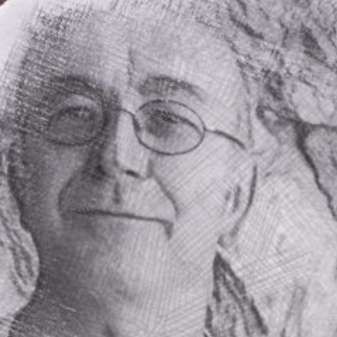It was the first time I'd been fully clothed in this venue. Prior to its 2008 reinvention, Dovecot Studios was the oldest of Edinburgh's six Victorian swimming pools. Now a tapestry studio and exhibition space, it doubles as a resonant chamber music venue. The musicians occupied the shallow end, amply lit by bright Edinburgh skies through the lengthy cupola.
There was, however, nothing shallow about the opening piece – Schoenberg's 1899 work, Verklärte Nacht ('Transfigured Night'), Op. 4. Although more often performed in the 1917 string orchestra version, members of the RSNO aired the original sextet, for two violins, two violas and two cellos. In his informative introductory remarks, William Chandler (associate leader of the RSNO) explained the background to the work, and some of its paradoxes. By means of distinct thematic material, the five sections of this single movement piece mirror those of the text upon which it is based – Richard Dehmel's controversial poem of the same name. It describes a nocturnal walk by a couple in the thrall of new love. The young woman reveals that she carries the child of another man. The sense of shame she feels about this is transfigured through the redemptive power of love. Schoenberg had, at the time of writing, recently met Mathilde von Zemlinsky, whom he later married. This could explain the miraculously short three weeks taken to pen such a substantial work.
One of the paradoxes is that this most famous Schoenberg opus features neither of the phenomena through which he achieved notoriety – atonality or serialism. Another is its rejection by the Vienna Music Society, on the grounds of a single 'forbidden chord': an inverted ninth. Schoenberg later sidestepped the entire system of Western tonality. One could hear in the harmonic language of this piece how such a course would soon seem inevitable to him. Harmony so ambiguous as to be capable of moving in any direction eventually moves in no direction – at least not with the gravitational pull which had previously fuelled Western composition.
Following a momentary intonational glitch, I felt that the members of the RSNO tuned in very convincingly to the sensibility of Schoenberg the Romantic. The impassioned, wide-ranging melodies were beautifully phrased and the sextet seemed, as a unit, to occupy that elusive territory between volatility and control. One keenly-felt dimension of the performance was dynamics, in which regard the sextet operated with one mind. The 'con sordino' (muted) passages were unbelievably delicate – almost prompting listeners to lean forward, and engage further with the story.
Youthful Schoenberg was complemented by early Beethoven: his Septet in E flat major, Op. 20. Although it could be argued that Beethoven's stylistic development was less radical than Schoenberg's, he more actively sought to distance himself from his immensely popular early piece, feeling that it eclipsed important later works. A six-movement serenade, it is scored for clarinet, bassoon, horn, violin, viola, cello and double bass. Beethoven's lifelong commitment to innovation characterises this early opus, and this is evident in his eschewing the tradition of paired wind instruments. Also novel was the undemocratic prominence given to the clarinet and violin. John Cushing (Principal Clarinet, RSNO) and William Chandler relished these respective roles – the latter directing with effortless subtlety from the fingerboard. There was a wonderfully relaxed feeling about the wind players, who seemed to be enjoying the piece immensely. David McClenaghan (Principal Horn, RSNO) dispatched virtuoso passages with casual aplomb. John Cushing was lyricism personified.
A further compositional innovation involved adding substantial slow introductions to the outer movements - throwing the livelier tempi into relief. The jaunty rhythms of the closing Presto seemed to imbue it with the flavour of a joyous farewell. In years of musical deliberation I've yet to come across an answer to the question: why is it that some movements, even out of context, have the unmistakable nature of finales? Is it all in the writing or is some of it down to the players? If the latter, then William Chandler deserves much of the credit for his virtuosically vigorous playing. Whatever the answer, on this particular occasion there was a distinctly upbeat feel to the finale, which seemed to invigorate the departing audience. I very much look forward to revisiting this wonderful venue for the next RSNO Chamber concert.


